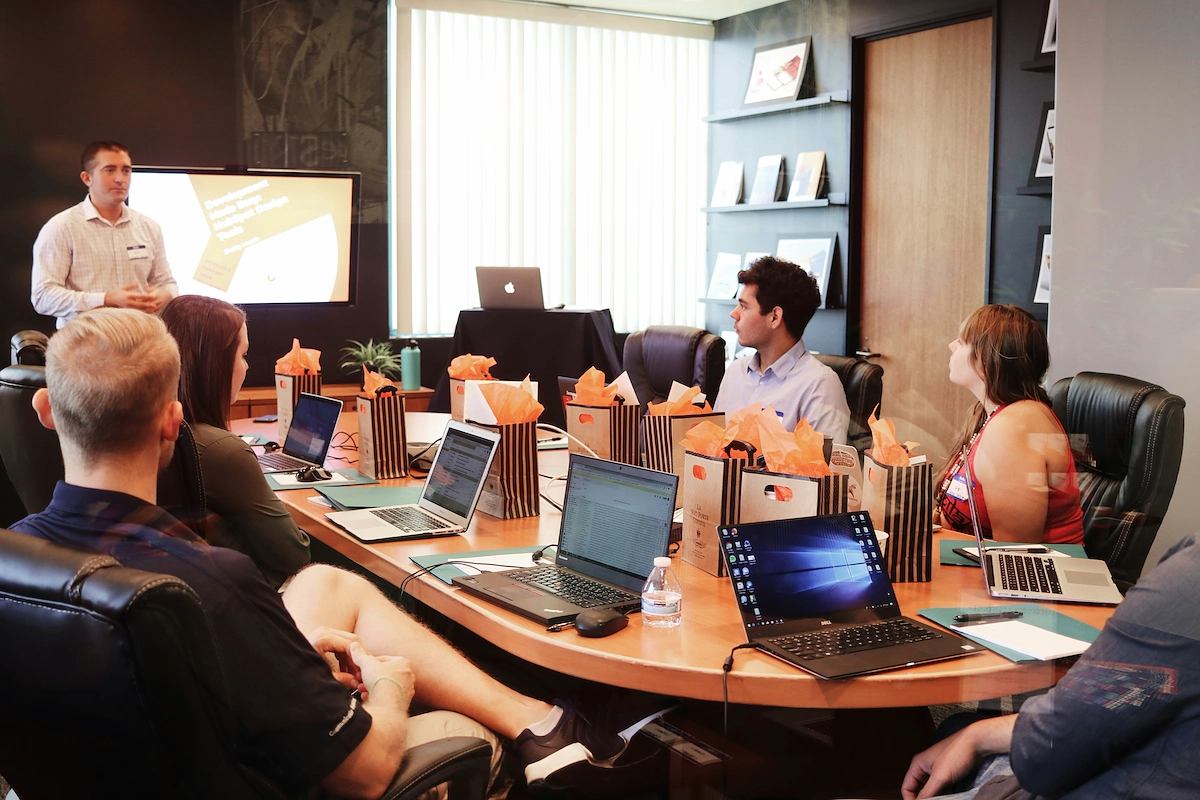Starting a pilot car business is an exciting venture that combines sharp driving skills and a deep knowledge of road safety with solid business savvy. The oversized freight industry is a multi-billion dollar market, creating steady demand for escort vehicles for everything from wind turbine blades and mobile homes to heavy construction machinery.
This guide will take you through the practical steps of obtaining necessary licenses, acquiring the right equipment, and finding your first clients to help you launch a successful pilot car business in the U.S.
Step 1: Plan your business and research the market
To start, check the demand in your area. You can review load boards like DAT and Truckstop.com for oversized freight originating nearby. Also, look at your state's Department of Transportation (DOT) website for permit data, which shows real-world oversized load movements.
Next, identify your competition. Use the Federal Motor Carrier Safety Administration (FMCSA) SAFER database to find registered escort vehicle operators. A simple Google Maps search for “pilot car services” will also reveal local players and their service areas.
Create your startup budget
Understanding your initial investment is a big part of your plan. Your main expenses will be the vehicle, specialized equipment, and insurance. A common misstep is to underbudget for commercial insurance, which has specific requirements for this industry.
A reliable used truck or large SUV might run from $15,000 to $30,000. Required equipment like signs, amber lights, and a height pole adds another $1,500 to $3,000. Business registration and state certifications could cost between $500 and $1,500.
Speaking of insurance, expect to pay between $2,000 and $5,000 for your initial commercial auto and general liability policies. This brings your total estimated startup costs to a range of $19,000 to $39,500. Preparing for this range helps you start on solid financial ground.
Here are 3 immediate steps to take:
- Research oversized load volume on two major load boards for your state.
- Create a detailed startup budget with estimates for a vehicle, equipment, and insurance.
- Identify three potential competitors in your area using the FMCSA SAFER database.
Step 2: Set up your legal structure and get licensed
First, protect your personal assets by forming a Limited Liability Company (LLC). This structure separates your business finances from your personal ones. An LLC also provides pass-through taxation, meaning business profits pass directly to you and you report them on your personal tax return.
Once your LLC is registered with your state, get an Employer Identification Number (EIN) from the IRS. You can apply for this federal tax ID online for free, and the process usually takes just a few minutes. You will need an EIN to open a business bank account.
Secure your state certifications
You need a Pilot/Escort Vehicle Operator (P/EVO) certification. Requirements are state-specific. For example, states like Florida and Washington require an 8-hour defensive driving course. These courses typically cost between $100 and $400 and are managed by your state's Department of Transportation (DOT).
A frequent misstep is to assume one state's certification is valid everywhere. You must be certified in each state you plan to operate in, unless a reciprocity agreement exists. Always verify which states recognize your certification before you accept a job that crosses state lines.
Here are 3 immediate steps to take:
- File for an LLC with your state's Secretary of State office.
- Apply for a free Employer Identification Number (EIN) on the IRS website.
- Research your state's P/EVO certification course and its reciprocity agreements.
Step 3: Secure your insurance coverage
Your next move is to line up the right insurance. You will need a few key policies to operate legally and protect your business. Most brokers and shippers require at least $1 million in both general liability and commercial auto liability coverage.
Understand your coverage needs
General liability covers third-party injuries or property damage not caused by your vehicle. Commercial auto liability is for accidents that involve your escort vehicle. Annual premiums for this combined coverage typically range from $3,000 to $8,000, depending on your record and vehicle.
A frequent misstep is to work with a general agent who doesn't understand trucking. You might want to connect with insurers who specialize in this industry, like Progressive Commercial, OOIDA, or Great West Casualty. They know the specific risks and ensure your policy meets shipper requirements.
As your business grows, you might also consider professional liability insurance. This protects you if a measurement error leads to cargo damage. If you hire drivers, you will also need workers' compensation.
Here are 3 immediate steps to take:
- Request quotes from at least two trucking-specialized insurance providers.
- Confirm that your quoted policies meet the $1 million general and auto liability minimums.
- Ask potential agents about their experience with pilot car operations.
Step 4: Outfit your vehicle and business
You can skip the expense of a commercial office. Most pilot car operators work from home. Your main concern for location will be checking local city or county ordinances for any rules about parking a commercially marked vehicle at your residence.
Acquire your vehicle and equipment
Your vehicle is your primary asset. A dependable used truck or a large SUV works well. Once you have your vehicle, you need to equip it properly for the road. This gear is non-negotiable for safety and compliance.
An amber light bar can cost between $300 and $800. You will also need "OVERSIZE LOAD" signs, which run about $100 to $200 a set. A quality height pole, used to measure overhead clearances, will set you back $400 to $700.
Some new operators try to save money with cheap, non-compliant gear. This often leads to failed inspections and fines. You should purchase DOT-approved equipment from reputable suppliers like SafeTruck or U.S. Cargo Control to ensure you are road-ready from day one.
Here are 3 immediate steps to take:
- Check local ordinances for rules on parking a commercial vehicle at your residence.
- Create a detailed equipment purchase list with prices from a supplier like SafeTruck.
- Confirm that all lighting and signage you plan to buy is DOT-approved for your state.
Step 5: Set up your payment processing
Handle your invoicing and cash flow
In the trucking world, payment terms like Net 30 or even Net 60 are common. This means you might wait one or two months for payment after you submit an invoice. Many operators rely on checks or bank transfers, which can slow down your cash flow.
A mistake some new operators make is not having a way to accept immediate payment. This can create cash flow problems, especially when you have upfront fuel and maintenance costs for each job. You need a way to get paid faster when the opportunity arises.
For pilot car businesses that need to accept payments on-site or on-the-go, JIM offers a streamlined solution. With JIM, you can accept debit, credit, and digital wallets directly through your smartphone. Just tap and you are done.
At just 1.99% per transaction with no hidden costs or extra hardware needed, it's a better rate than the 2.5% to 3.5% you often see with other providers. It's particularly useful for collecting a deposit before a run or settling payment immediately after a successful delivery.
- Get Started: Download the JIM app for iOS.
- Make a Sale: Type the sales amount, hit sell, and ask your customer to tap their card or device on your phone.
- Access Funds: Your money is available right on your JIM card as soon as the sale is done. No waiting for bank transfers.
Here are 3 immediate steps to take:
- Decide on your standard payment terms (e.g., Net 30) for invoiced clients.
- Download the JIM app to review its features for on-the-spot payments.
- Compare JIM's 1.99% rate to other mobile payment options you find.
Step 6: Fund your business and manage finances
Secure your startup and operating funds
For startup funds, the SBA Microloan program is a solid option. These loans go up to $50,000 and are designed for new small businesses. You will likely need a credit score over 640 to qualify, with interest rates typically between 8% and 13%.
Another route is equipment financing. With this type of loan, the lender uses your truck or other major equipment as collateral. This can make it easier to get approved, even with a limited business history. It keeps your other assets free and clear.
Plan for your cash flow
Many new operators get caught by slow payments. You need enough working capital to cover at least six months of expenses like fuel, insurance, and maintenance. Budget for $10,000 to $18,000 to stay afloat while you wait for those Net 30 or Net 60 invoices to clear.
Once you have funding, open a dedicated business checking account immediately. Mixing personal and business funds is a bookkeeping nightmare and can put your LLC's liability protection at risk. You might also use accounting software like QuickBooks Self-Employed to track every dollar.
Here are 3 immediate steps to take:
- Calculate your six-month working capital requirement based on your budget.
- Research two SBA Microloan lenders and one equipment financing company.
- Open a separate business checking account for your LLC.
Step 7: Hire your team and manage operations
Finding and paying your drivers
A single, active driver can generate significant revenue, often between $1,200 and $1,800 per week. To grow beyond that, you will need to hire other certified Pilot/Escort Vehicle Operators (P/EVOs). Their main duties include route navigation and traffic control.
Most operators pay drivers as independent contractors. Common pay structures are per-mile rates, typically $0.50 to $0.75, or a flat day rate between $300 and $500. You should have a clear contract that outlines payment terms for every job.
Before any driver takes a load, you must verify their P/EVO certification is valid for every state on the route. Some new owners forget this step. A lapsed certification can lead to fines and delays, which your business will be responsible for.
Managing your daily operations
When you are just starting, a simple tool like Google Calendar works well for scheduling jobs and drivers. As your fleet grows to three or more vehicles, you might explore dispatch software like Axon or Trimble to manage logistics more efficiently.
It is also important to correctly classify your workers. Many new business owners run into trouble by misclassifying W-2 employees as 1099 independent contractors. This can lead to serious tax penalties, so consult an accountant to get it right from the start.
Here are 3 immediate steps to take:
- Draft a standard independent contractor agreement outlining pay rates and responsibilities.
- Create a system to track driver certifications and their expiration dates for each state.
- Consult an accountant to understand the legal differences between a 1099 contractor and a W-2 employee in your state.
Step 8: Market your business and find clients
Your first source for jobs will be load boards like DAT and Truckstop.com. This is where brokers post immediate needs for pilot cars. While these boards are great for quick work, the rates can be competitive and the jobs inconsistent.
For more stable, long-term work, you should build direct relationships with heavy haul trucking companies. Use the FMCSA SAFER database to create a list of carriers in your region that specialize in oversized freight. Direct outreach often leads to better rates and repeat business.
Establish your professional image
Many new operators make the mistake of relying solely on load boards. To stand out, create a simple website and a Google Business Profile. These should clearly display your certifications, service area, and contact details so potential clients can verify you are a legitimate operation.
A good goal is to convert one out of every 10-15 cold calls into a job. Your customer acquisition cost is mostly your time, but that first job can lead to a long-term partnership. Also consider leaving business cards at truck stops or with local heavy equipment dealers.
Here are 3 immediate steps to take:
- Build a target list of 10 heavy haul carriers using the FMCSA SAFER database.
- Set up a free Google Business Profile with your service area and contact info.
- Dedicate time to call five companies from your list this week to introduce your services.
Step 9: Set your pricing strategy
Establish your rates
Most pilot car operators charge by the mile. A typical rate is between $1.75 and $2.50 per mile. This rate often includes your travel to the pickup point and back home, known as "deadhead" miles. You should factor this into your quotes.
For shorter runs or jobs with long wait times, a day rate of $400 to $600 makes more sense. You should also establish fees for extras. An overnight stay might add $150 to $250, and a fuel surcharge can protect you when gas prices spike.
Calculate your profit and research competitors
Your pricing needs to cover all costs and leave a healthy profit. After fuel, insurance, and vehicle maintenance, aim for a 40-50% profit margin on each job. This ensures you have enough left to pay yourself and grow the business.
Some new owners just guess their rates. A better approach is to call a few local competitors and ask for their rate sheet, posing as a broker. Also, watch the pilot car rates posted on load boards like DAT to see what the market currently pays.
Here are 3 immediate steps to take:
- Calculate your break-even cost per mile, including fuel and insurance.
- Call three local competitors to get a copy of their rate sheets.
- Create a standard list of your accessorial fees, like overnight and fuel charges.
Step 10: Maintain quality and scale your operations
Your reputation is built on reliability. To maintain quality, you should track key performance metrics. Aim for a 99% incident-free run rate and over 98% on-time performance. You can track this with a simple spreadsheet that logs job details, client feedback, and any issues.
When to scale your fleet
Once you consistently hit your quality targets, you can think about growth. A good sign it is time to expand is when you regularly turn down three to five jobs per week due to lack of availability. This shows there is unmet demand for your services.
Some owners jump at expansion too soon. Before you buy a second vehicle, make sure you have the cash flow to cover its insurance, maintenance, and a driver's pay for at least three months. This prevents financial strain while the new asset gets up to speed.
When your first vehicle is booked over 80% of the time, it is a solid indicator to hire your first driver. As you add vehicles and drivers, you might want to look at dispatch software like Axon or Trimble to manage the increased complexity of your schedule.
Here are 3 immediate steps to take:
- Establish a target for on-time performance, such as 98% or higher.
- Set a weekly turn-down number, like four jobs, that will trigger your search for a second vehicle.
- Create a spreadsheet to track client feedback and job completion details for quality control.
You now have the roadmap to launch your pilot car business. Remember that your reputation for reliability is your most valuable asset. Prioritize safety and clear communication on every run. With a solid plan, you are ready to hit the road.
And when it comes to getting paid, a simple solution like JIM helps your cash flow. It turns your smartphone into a card reader for a flat 1.99% fee, with no extra hardware. Download JIM to get your money on the spot.















